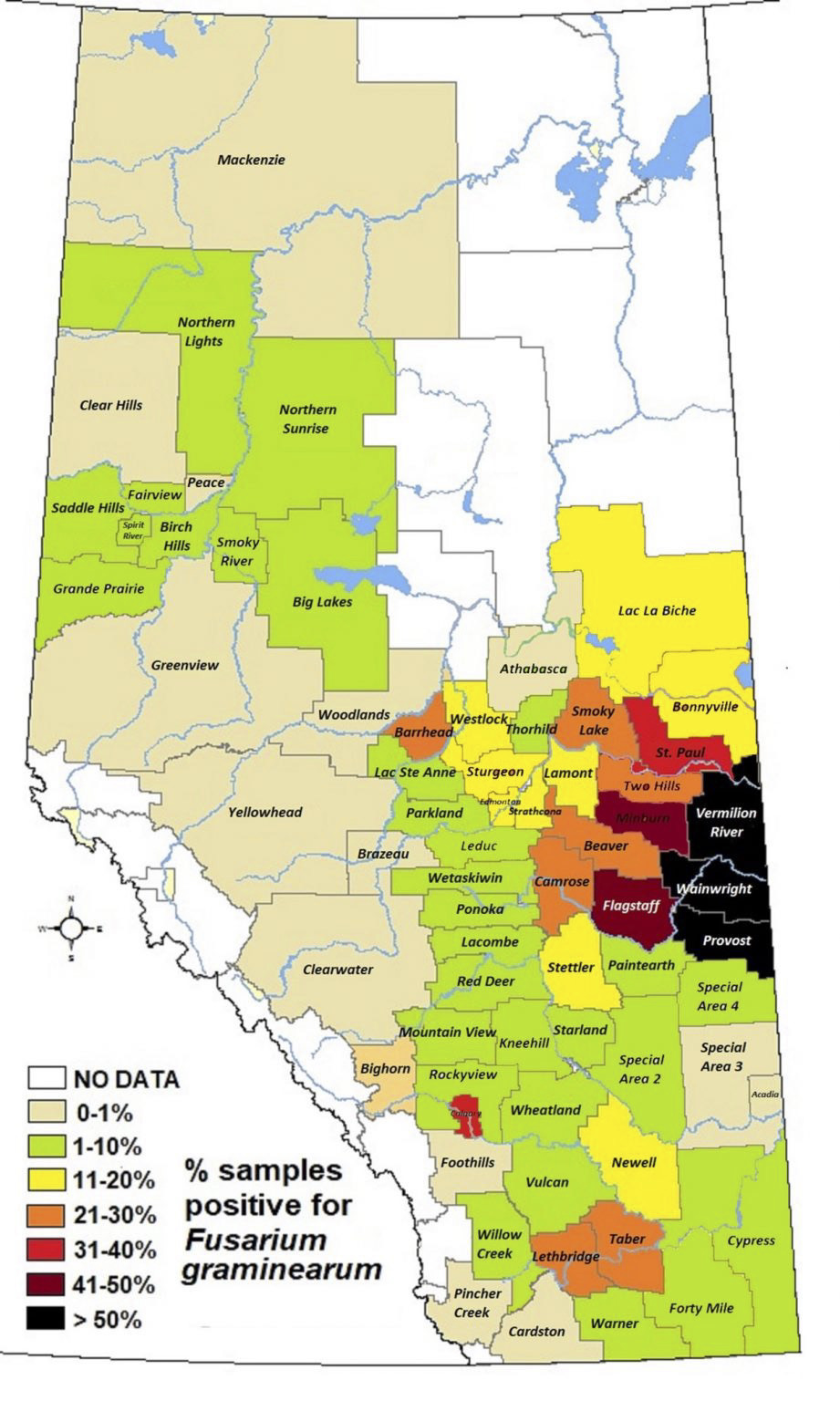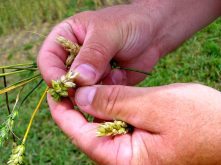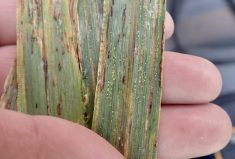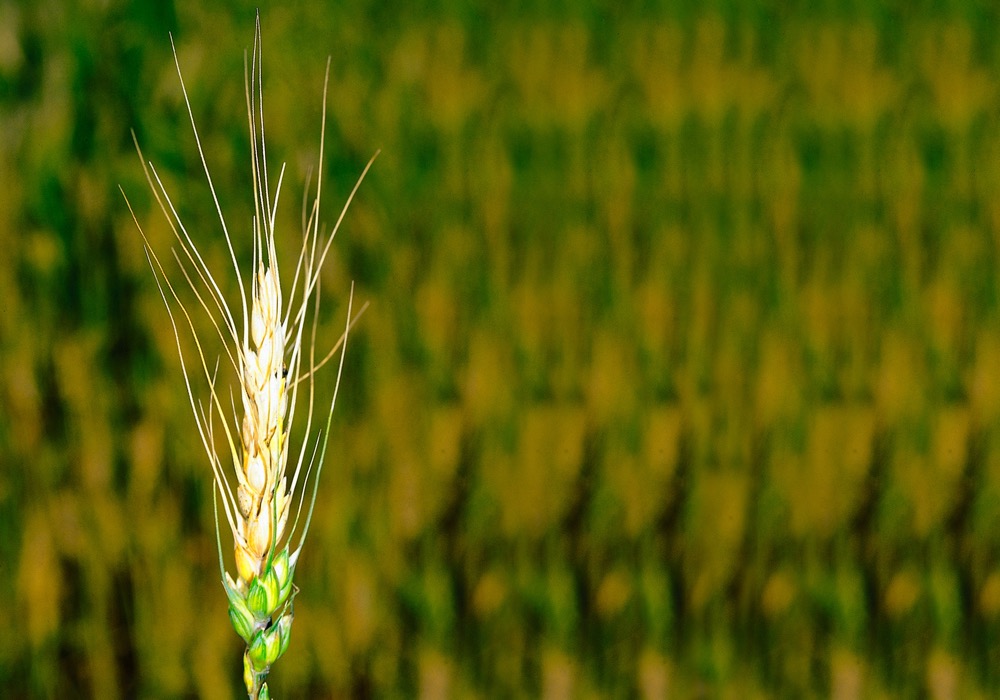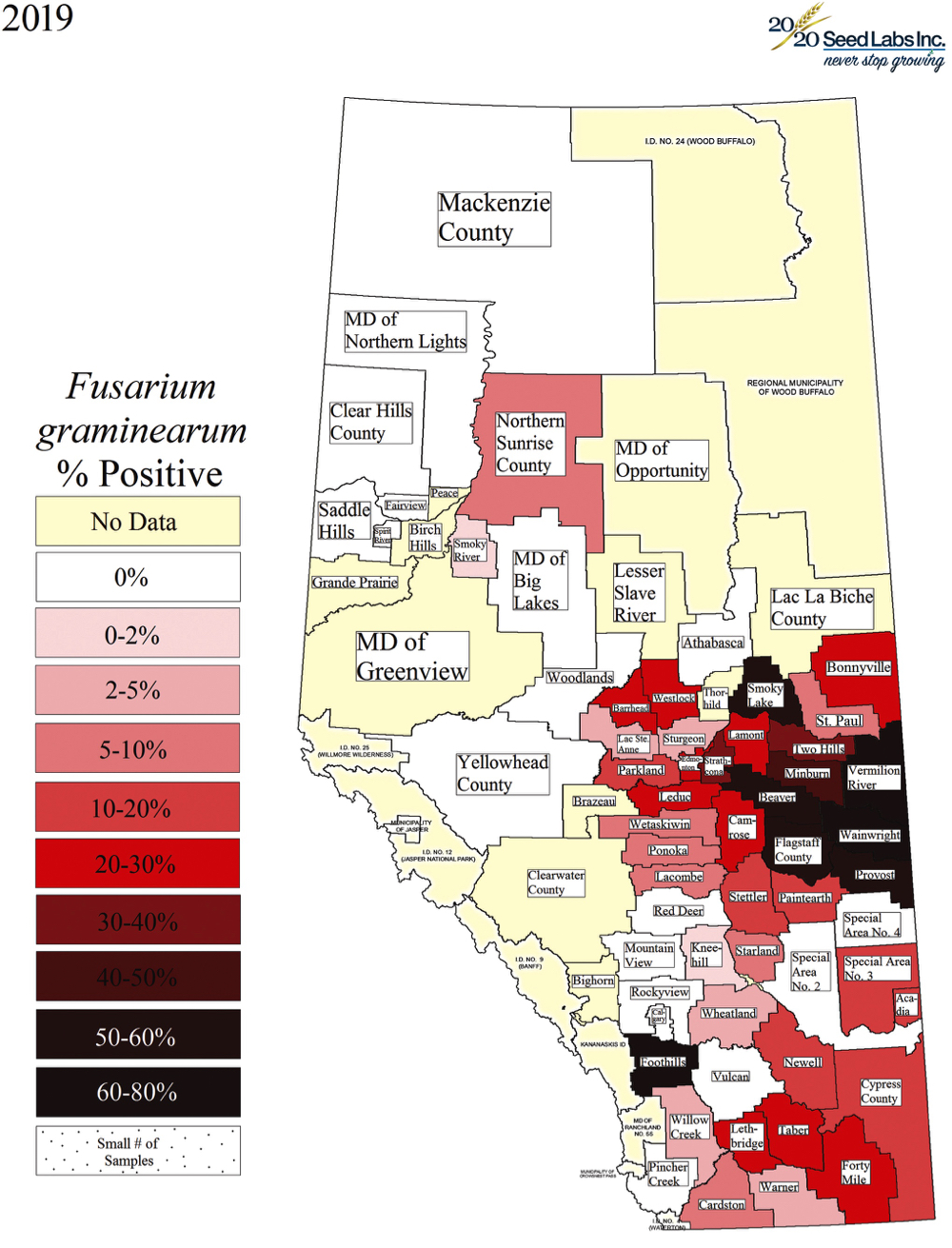Alberta Seed Processors has released its final report on fusarium graminearum (Fg) seed infection survey results. These results are part of a new phase of fusarium head blight (FHB) management in Alberta.
The project was launched in the fall of 2020 with the goal of better understanding how farmers can manage, control and prevent the devastating disease. It included numerous partners, including three Alberta seed labs.
Results from over 8,600 cereal seed samples from 60 rural and two urban municipalities (collected from September to April) were used for this final report. The highest infection rate recorded was 91 per cent, however, the majority of samples tested negative and the average infection rate was 0.346 per cent. Germination values of 5,970 samples tested ranged from zero to 100 per cent, with the mean germination value being 93.21. Vigour values of 3,644 samples ranged from zero to 100 per cent, with the mean value being 88.45 per cent.
Read Also

Farming Smarter receives financial boost from Alberta government for potato research
Farming Smarter near Lethbridge got a boost to its research equipment, thanks to the Alberta government’s increase in funding for research associations.
Fusarium head blight (FHB) infection comes from two basic sources: Windblown spores from crop residues such as stubble and stover/stalks, and infected seed. This project only documents detection of Fg seed infection and it can be assumed that when there was seed infection, it was likely caused by windblown spores. Therefore, it is assumed that areas with significant levels (greater than two per cent) of Fg infection have the pathogen established in crop residues and have elevated requirements for FHB management.
Sample location is reported based on the postal code to which the sample results were sent.
As a result, the second assumption is that the samples tested were produced in the municipalities where the results were sent. However, this may not be the case. (For example, the map shows samples tagged to Calgary and Edmonton.)
The map is intended to be a helpful guide. Used in conjunction with other FHB management tools such as the Fusarium Head Blight Environmental Risk Map, the information can help evaluate risk and plan management responses.
For example, in or near regions of higher disease incidence, growers are advised to participate in as many preventive FHB management activities as possible based on the risk of infection. This could include using long, diverse crop rotations (a two- to three-year break from host crops such as wheat and corn), planting seed with the best varietal resistance to FHB, using seed with low or no Fg infection, using seed treatment with fusarium species on the label, regular field scouting, and foliar spray protection when within IPM guidelines.

